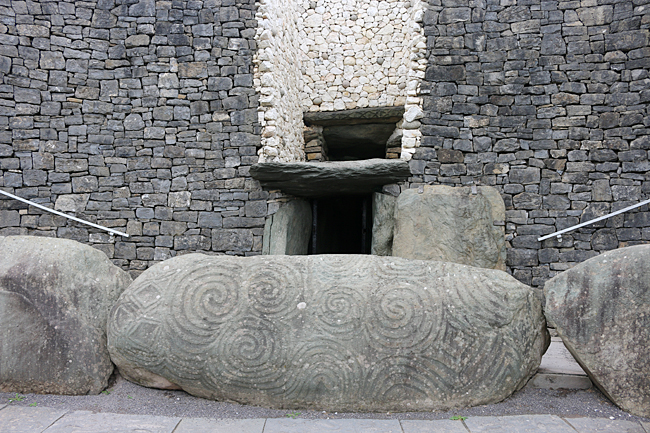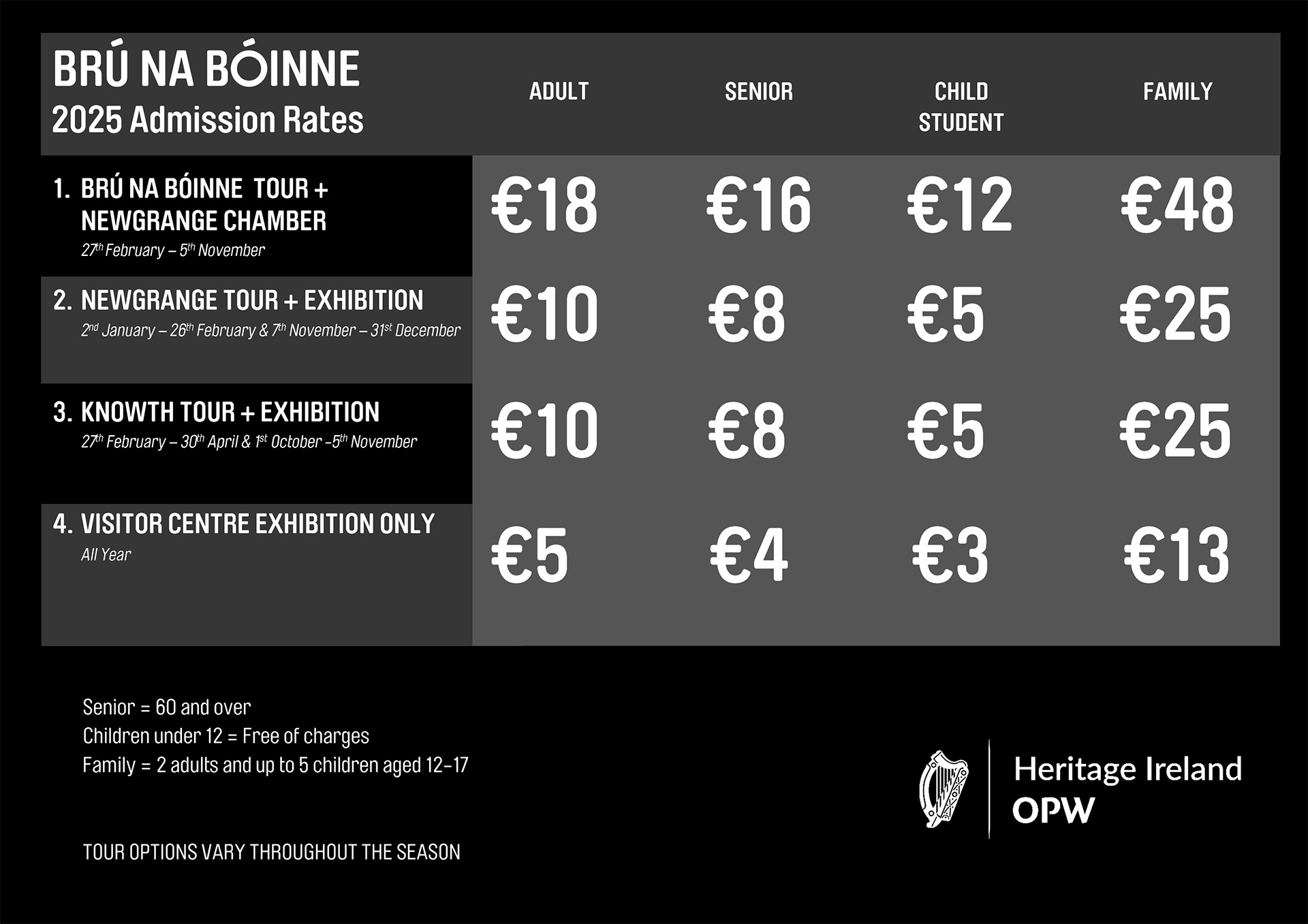Note: This article pertaining to Newgrange: Passage Tomb in Ireland was originally published on Tuesday, October 21, 2014 at 3:50 in the afternoon and has been updated.
Predating Stonehenge in England by hundreds of years, Newgrange is the best known passage tomb — which is a narrow passage constructed of large stones and one or more burial chambers covered in earth or stone — in Ireland which dates back to approximately the year 3,200 Before the Common Era.
Newgrange: Passage Tomb in Ireland
Although I had been to Stonehenge, I had not heard of Newgrange until it was recommended to me by someone I know who resides in Ireland. However, one of the people with whom I went to Newgrange had been meaning to visit for years.
Access to Newgrange is only available by a bus which departs from the visitor centre to the site itself. The bus ride takes several minutes — although waiting for it to depart can take longer than the short trip itself.

The visit itself takes approximately 90 minutes or so. You cannot enter the passage tomb without an official guide; and due to the popularity of the site, time is limited once inside. No photography is allowed inside the passage tomb — even without a flash.

The large mound is approximately 80 meters in diameter and is surrounded by 97 stones at its base — the most impressive of which is the entrance stone shown in the photograph below.

Notice the small opening known as a roof box situated above the entrance to the passage tomb. At dawn on December 21, which is the winter solstice — the shortest day of the year — and for a number of days before and after, a shaft of sunlight enters the chamber through an opening in the roof box.
The winter solstice marked the start of the new year to the people of the Neolithic culture of the Boyne Valley. Although it may have served other purposes — part of the myriad of mysteries which surround Newgrange — it was considered a sign of the rebirth of nature and a promise of renewed life to crops, animals and humans.
Because the winter solstice occurs only one time per year, it is impossible to witness the shaft of sunlight which enters the chamber inside the passage tomb. The official guide can emulate the effect with the flip of a switch, where a yellow electric light bulb simulates the sunlight.
A lottery is held every year where if chosen, visitors can be inside the passage tomb during the winter solstice — but many people participate in the lottery, so chances are slim that you will be able to attend. You have no reason not to try if you are truly interested, though.
Entry into the passage tomb itself is narrow; and you have to bend forward so that you do not bonk your head. Once inside the small chamber, you get to see the ancient artwork carved in the stone walls and marvel at how the roof remains impervious to leaks from outside precipitation thousands of years after it was first constructed. Unfortunately, graffiti is also carved into the stone walls as well.
At one point, all illumination was turned off, which enveloped us in almost complete darkness. It somewhat reminded me of one point during a tour underground when I visited Mammoth Cave National Park where there was no light or no sound.

Similarly to Stonehenge, free-standing stones surround the passage tomb. Their purpose is unknown; although they are thought to have had a function related to astronomy. The stones are not nearly as tall as those found at Stonehenge.

The white quartz stones and round dark granite rocks on the outer wall along the front of the passage tomb were added later and were not part of the original construction.

Many questions have yet to be answered pertaining to Newgrange; and we were repeatedly told by the official guide that our theories are just as valid as those of the experts. Perhaps you should consider visiting Newgrange — which I highly recommend — and arrive at your own conclusions.

Final Boarding Call
For the record, the entrance fee for Newgrange used to cost six euros per person back in 2014, which included admission to the exhibition in the Brú na Bóinne Visitor Centre; although reduced admission prices were available to senior citizens, groups, children and students. Tickets used to be sold in person on a first-come, first-serve basis; but in 2025, tickets must now be purchased in advance.
Brú na Bóinne
Donore
Drogheda
County Meath
A92 EH5C
Ireland
Operating Hours of the Visitor Centre
- January 2 through February 26 9:00 in the morning through 4:15 in the afternoon
- February 27 through February 28 9:30 in the morning through 4:45 in the afternoon
- March through April 9:30 in the morning through 4:45 in the afternoon
- May through August 9:00 in the morning through 5:45 in the afternoon
- September 9:00 in the morning through 5:15 in the afternoon
- October through December 9:00 in the morning through 4:15 in the afternoon
- December 24 through December 27 and January 1 Closed
Admission Rates for 2025

Once the tickets are purchased, guests must cross the footbridge over the River Boyne to access the awaiting shuttle buses — some of which go to Newgrange; while others go to Knowth, which I also visited. If you decide to splurge 18 euros to see both — the price was eleven euros in 2014 — you must take the shuttle bus from one passage tomb back to catch the shuttle bus to the other passage tomb. Leave yourself some time, as you could wait as long as ten minutes before a shuttle bus departs. Factor in the actual trips; and it is easy to need at least 30 minutes between both passage tombs.
To get to Newgrange — which is located in County Meath approximately 38 kilometers north of Dublin — drive on the M1 highway north from Dublin to junction 9; and at the roundabout, turn left and head west on Donore Road. Newgrange is located fewer than five kilometers from the exit of M1 — and the signage is quite clear, as you will not get lost. Be aware, however, that there is a toll of €2.30 each way on M1 at a toll plaza located between junctions 7 and 8 near Dardistown; so have your cash ready — unless you decide to exit at junction 7 to take route R132 north to Drogheda and turn left onto Donore Road in order to avoid paying the toll.
The toll on M1 used to be €1.90 back in 2014…
All photographs ©2014 by Brian Cohen.

